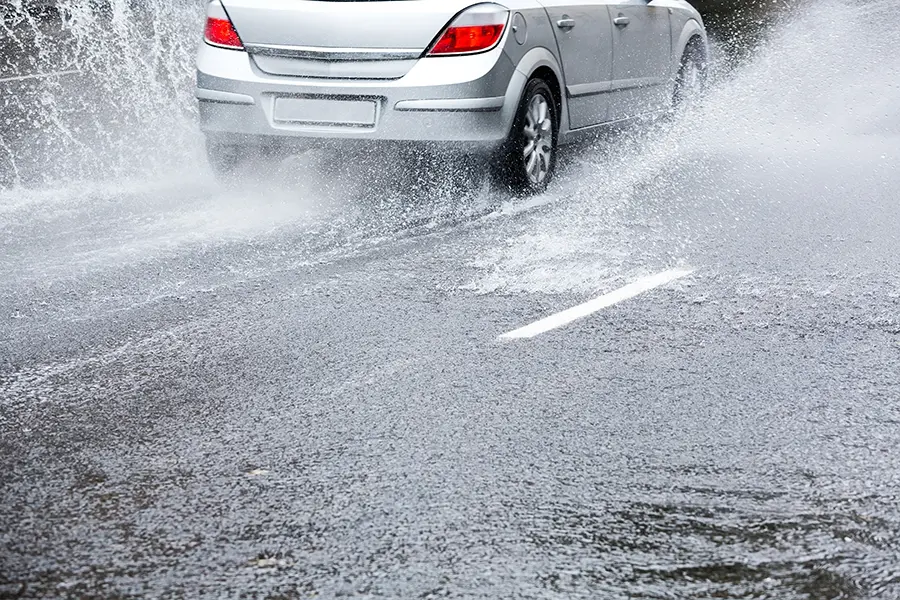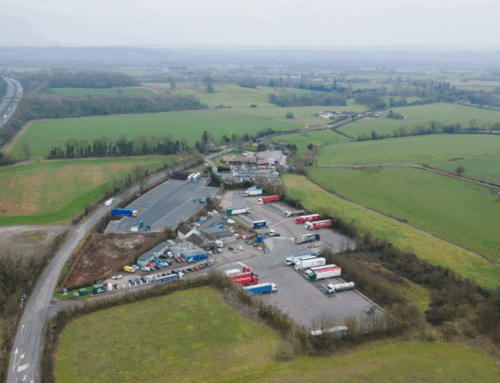Updated 31st October 2024
This month’s legal update on vehicle roadworthiness, for those who manage drivers, comes to us from Mike Hayward of Woodfines Solicitors.
Weather Conditions – your fleet, your legal responsibilities
Your fleet drivers will assert they are the most competent of drivers and that the vehicle they are driving is well maintained and safe. Having a safe combination of driver and vehicle is essential whatever driving task they are engaged in. These can be risk managed through your driving for work policy and various checks e.g. driver licence checks and vehicle inspections.
As a fleet manager you will issue a driver handbook and periodic driver ‘toolbox’ talks and undoubtedly these will include reference to drivers adhering to the road law. Risks will always be associated with driving. It is essential to manage the risks to your employees.
One factor that is difficult to control is the weather.
Your drivers and the risks
When it comes to your drivers and the risks, driving for work laws say that employers have a duty of care.
The Health and Safety at Work etc Act 1974 requires employers to take appropriate steps to ensure the health and safety of their employees and others who may be affected by their activities when at work. An employer has a responsibility to take all reasonable steps to manage these risks and do everything reasonably practicable to protect people from harm.
The Management of Health and Safety at Work Regulations 1999 require every employer to carry out an assessment of the risks to the health and safety of their employees, or themselves, while they are at work, and to other people who may be affected by their work activities. This includes any driving activity on the road.
As well as drivers being competent and capable of doing their work in a way that is safe for them and others, and having maintained vehicles, the HSE recommends that journey planning should:
- take account of appropriate routes.
- incorporate realistic work schedules;
- not put drivers at risk from fatigue;
- take sufficient account of adverse weather conditions.
Fleet managers should therefore consider the impact of the weather, regardless of the season, and have a driver handbook / training that requests drivers to adapt their driving behaviour based on the potential influence adverse weather may have on their vehicle and other road users. There is of course a legal obligation on any driver to comply with road law and have good driver behaviours, but as an employer, setting out your expectations and seeking to take account of adverse weather conditions is advised.
Weather can change between locations of course, and no fleet manager can foresee every eventuality. It makes good sense in practice, however, that additional time should be given for driver duties in making deliveries, for example, if there is clear adverse weather in place or anticipated.
Setting out your expectations
Setting out your expectations as an employer to your drivers is important as part of the HSE expectations, but also demonstrates your care for your employees. The importance of having regard to weather conditions can be included in your overall driver risk assessment. Whatever the weather, it is advisable to take all possible steps and precautions. If there is an incident which was attributed to a driver’s failure to take into account road or weather conditions, then this could lead to roadside enforcement or court proceedings.
Careless driving is defined under the Road Traffic Act of “driving falling below what would be expected of a competent and careful driver” (per section 3ZA of the Road Traffic Act 1988). The Crown Prosecution Service, whether considering cases of careless driving or dangerous driving will have regard not only to the circumstances of which the driver could be expected to be aware, but also to any circumstances shown to have been within their knowledge. In essence, stating that they would have regard to numerous factors, including an awareness of the prevailing weather conditions when driving.
Reducing speed in fog, or doing so where there is ice on the road, may be the most obvious scenarios, as could a problem caused by the sun setting or rising low in the sky, impacting on visibility. Certainly, in the absence of any other clear and obvious feature that leads to a road collision and investigation into the cause, the police would also have regard to the road conditions, whether there had been rain, excessive leaves, sun, or levels of precipitation.
The Crown Prosecution Service is the body responsible for bringing cases on behalf of the Crown (the Police). While of course there are examples of bad driving whether that be dangerous or inconsiderate, when in the context of weather conditions, it is even the case that driving through a puddle causing pedestrians to be splashed could, dependent on the circumstances of the individual case, amount to inconsiderate driving. This is perhaps one end of the spectrum when looking at the need to adjust driving according to the weather.
It is important to also consider road conditions do not only become more slippery as a result of ice, but also in the case of wet weather. Slippery road surfaces also impact on stopping distances.
Autumn Driving Conditions
This summer has seen unprecedented levels of rainfall. The cleaning of roadside gullies is not such a common sight as it used to be, leading to more water backup and the inevitable spray seen commonly when following vehicles ahead. As we head move through Autumn and Winter, wet weather conditions will undoubtedly continue.
Taking into account road conditions coupled with weather conditions is essential, and keeping a sufficient gap between you and the following vehicle is advisable.
The Highway Code provides guidance between sections 226 and 237 for driving in adverse weather conditions. In wet weather, stopping distances will be at least double those required for stopping on dry roads.
It is typical that tyres will have less grip, and if a vehicle is driven through deep water, the brakes may be less effective.
Typical stopping distances are illustrated below (Highway Code section 126).
The Highway Code in normal dry weather conditions suggests allowing at least a 2 second gap between you and the vehicle in front on roads carrying fast moving traffic. It is also suggested that for the typical gap the rule is never to get closer than the overall stopping distance as indicated in the typical stopping distance diagram above.
If visibility is reduced or there are adverse weather conditions, then that gap should be doubled and increased further on icy roads.
Driving in Snow & Ice
As code 229 of the Highway Code states:
“You must be able to see, so clear all snow and ice from your windows. Lights need to be clean and number plates clearly visible and legible. Mirrors and windows should be demisted, and it is recommended to check your planned route for any delays, or any weather predicted”.
If law enforcement sees a vehicle that has not been cleared properly or even observes snow falling away from the vehicle, then a fixed penalty fine can be imposed, and points added to a licence. If a vehicle causes any difficulty to other road users because of poor driving, then section 3 of the Road Traffic Act 1988 provides for an offence where it can be shown that somebody drove “without reasonable consideration for other persons using the road or place”.
The construction and use regulations make it clear that when a driver is in control of a vehicle, they must have a full view of the road and traffic ahead at all times.
There is no question that the summer of 2024 has not been the sunny and warm one anticipated. The behaviour of the weather is out of our control, but the behaviours you rightly demand and expect from the drivers in your employment can be within your control, through assessing risk and issuing
instructions to reduce risk. The law is the law, but this needs to be coupled with applying common sense to each journey which can help reduce incidents and improve safety.
Mike Hayward of Woodfines solicitors is a motoring and regulatory lawyer who advises companies and individuals.







